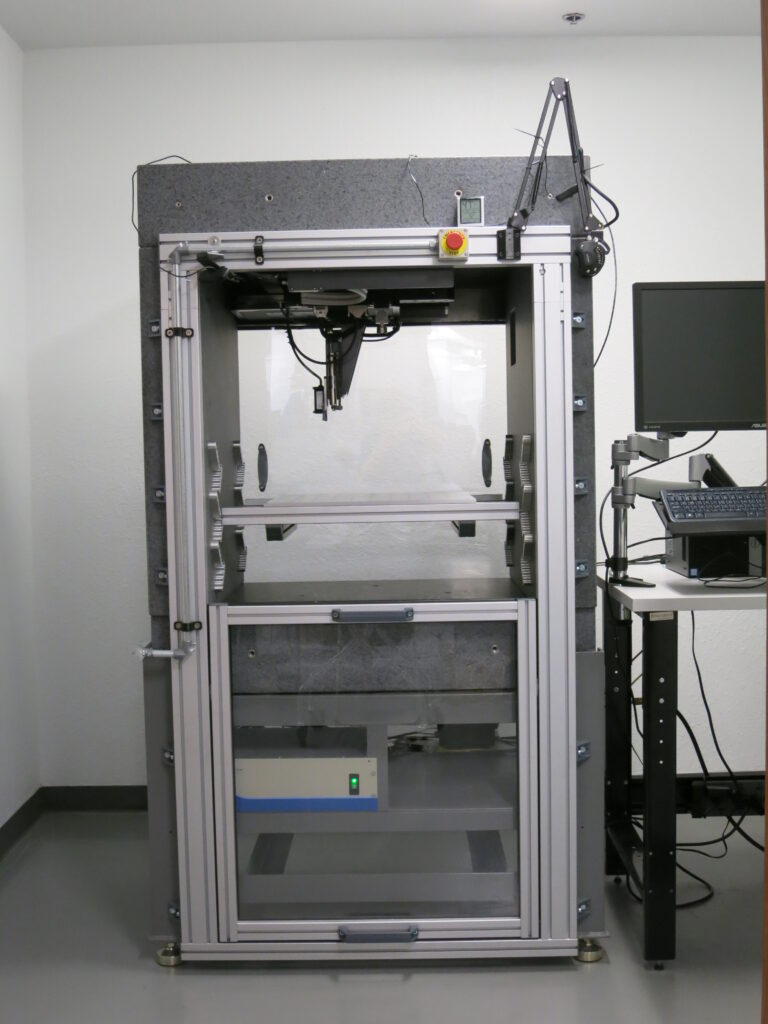In the intricate world of residual stress analysis, the pursuit of precision is an ongoing endeavor. The Hill Engineering Scanning Profilometer (HESP) was a result of this perennial struggle, offering a satisfying, in-house solution that revolutionized our ability to perform contour method residual stress measurements.
Motivation
One of our primary residual stress measurement techniques, the contour method, involves using an electric discharge machining (EDM) device to split a manufactured work-piece in two. This creates a new surface along a plane of interest. Internal residual stresses are released during the cutting process, causing deformations along this plane. Those deformations are then measured to determine a two-dimensional map of stresses within the manufactured part.
When Hill Engineering moved to our current office in Rancho Cordova, designated space for a new profilometer system to be developed and built in-house was set aside.
Design Improvements
While the previous system was serviceable for our needs, design limitations left room for improvement. The HESP system was created to address these shortcomings while matching a base quality for the surface scans. Nominally, it needed to use a non-contact displacement sensor capable of collecting in-plane measurement points with a spacing as small as 10 μm.
Additionally, the HESP system had to overcome the work-piece weight restrictions of the previous system, which used a motorized platform to move the work-piece beneath a stationary sensor during surface scans. The motors could only provide so much force, meaning heavier parts could not be measured.
To address this issue, the HESP system takes an alternate approach. The work-piece remains stationary, resting on a vibration-isolated table, which removes any issues presented by overly-heavy parts. The sensor is then moved along the scan path instead.
The HESP system increased the vertical range of the sensor to 10 mm, while the total scan surface area was increased by 125%, which enabled us to measure larger parts than we could with the previous system. Additionally, by choosing to move the sensor instead of the piece, the scan speed could be increased two-fold.
Software Improvements
Development of the HESP system included addressing software needs as well. In-house software tailored the user experience to contour method residual stress measurement needs. Operators can effortlessly specify the in-plane measurement shape, area, and point spacing.
Design Success
Situated in a temperature-controlled room and connected to a reliable power source, the HESP system has more than proven its worth during its 8 years of operation. The design and software improvements have increased contour measurement efficiency and precision. The in-house development means that we can continue to improve upon its design as new and innovative ideas arise.
For more information about the contour method, our scanning capabilities, or any of our other residual stress measurement techniques, please contact us.
